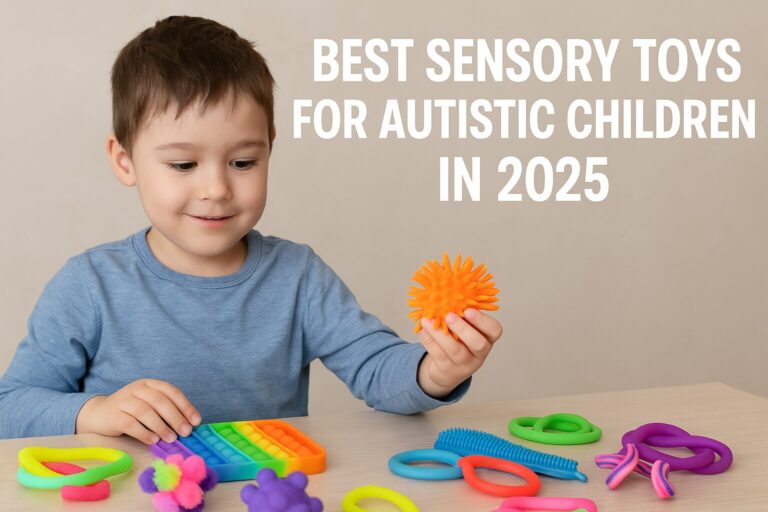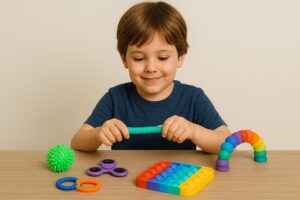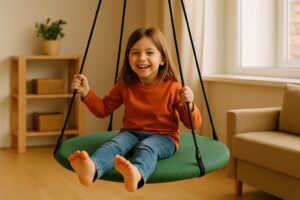Looking for the best sensory toys for autistic children in 2025? Whether your child is sensory-seeking or sensory-avoiding, the right toy can provide comforting regulation, spark joy, and support self-regulation. This guide features expert-curated picks organized by age, sensory type, and affordability — with top-rated options available on Amazon.
Every toy featured here is:
- Highly rated by parents, therapists, and educators
- Designed to support one or more sensory needs (touch, movement, sound, etc.)
- Available for easy purchase online (most under $30!)
Want faster, customized results? Take our Sensory Toy Finder Quiz to discover toys tailored to your child’s sensory profile.
What Makes a Great Sensory Toy for Autism?
Autistic children often benefit from toys that help regulate sensory input. Key types include:
- Tactile: Textures like squishies or putty
- Vestibular: Motion or balance tools such as swings or wobble boards
- Proprioceptive: Deep pressure tools like weighted toys or compression vests
- Auditory: Calming sounds like white noise or musical toys
- Visual: Light-based tools like lava lamps or fiber optics
Best Sensory Toys by Age Group
Toddlers (Ages 1–3)
- Textured Sensory Balls — Soft, teething-safe balls that build tactile curiosity and fine motor strength.
- Sensory Stacking Cups — Bright colors and playful textures help with cause and effect learning.
Preschoolers (Ages 4–6)
- Weighted Stuffed Animal — Combines comfort with calming deep-pressure therapy (top picks: Huggaroo or Manimo plush).
- Chewelry Necklace Set — Safe and discrete chewing options to redirect oral sensory habits.
Kids (Ages 7–12)
- Kinetic Sand Sensory Set — Enhances tactile play and fine motor skills through molding.
- Sensory Swing (Pod or Hammock) — Ideal for vestibular input and creating a cozy retreat indoors.
Teens
- Fidget Ring or Pen — Subtle tools that support focus and anxiety management during school or work.
- Noise-Canceling Headphones — effective for managing sensory overload in loud environments (brands like Bose or PuroSound recommended).
Multi-Sensory Gift Box Ideas for 2025
Want to create a sensory-friendly gift package? Combine:
- Weighted plushie (touch + pressure)
- Calming sound toy (auditory comfort)
- Scented dough or putty (smell + tactile exploration)
- Lava lamp or motion light (visual focus)
- Chewelry necklace (oral sensory support)
Browse our Amazon Sensory Gift Picks for ready-made combinations.
Frequently Asked Questions
What is the best sensory toy for an autistic child?
There’s no single “best” toy—some children respond to weighted items, while others gravitate toward visual tools like fiber optics. The best approach is to understand their sensory profile—try our quiz to get personalized recommendations.
Do sensory toys help autistic kids?
Absolutely. They aid focus, calmness, and engagement through sensory support during stressful or overstimulating moments.
Can sensory toys help prevent meltdowns?
Yes. Tools like weighted items, swings, and tactile toys can redirect and alleviate sensory overload when used proactively.
Are sensory toys suitable for nonverbal children?
Yes—most sensory toys are inherently nonverbal and support expression and sensory exploration regardless of communication style.
Quick Links for Easy Navigation
As an Amazon Associate, SensoryGift.com earns from qualifying purchases. Your support helps make sensory solutions more accessible.


